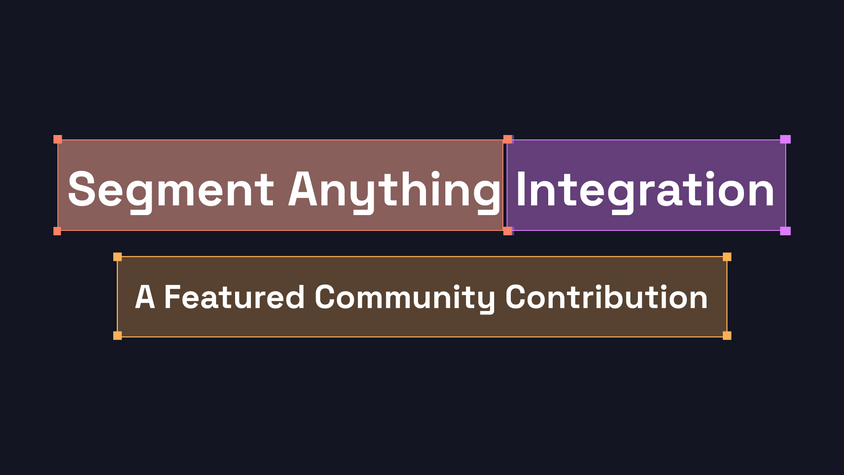Computer Vision Data Labeling for Machine Learning & AI
Get started with Label Studio, the most popular open source data labeling platform for any data type. Label Studio supports a variety of use cases for images & computer vision data labeling. Install Label Studio, connect your data, and configure your labeling UI with a pre-built template to quickly get started labeling.

Use Cases for Computer Vision & Image Data Labeling
Semantic Segmentation with Polygons
Precisely outline and annotate complex object boundaries in images, allowing for accurate recognition of objects with irregular shapes or occlusions. Applications include autonomous driving, medical image analysis, and environmental monitoring.
Semantic Segmentation with Masks
Identify and delineate specific regions of interest within an image, enabling precise object detection and background separation. Use cases include instance segmentation, object counting, and interactive image editing, where pixel-level accuracy is crucial.
Object Detection with Bounding Boxes
Identify and localize multiple objects within an image by drawing rectangles around them. Popular use cases include surveillance systems, autonomous vehicles, and retail analytics, where it enables efficient and real-time recognition of objects.
Keypoint Labeling
Annotate specific points of interest on objects, such as joints, corners, or landmarks, providing valuable information for pose estimation, facial recognition, and human activity analysis. This technique enables precise localization of key elements, making it instrumental in various fields like sports analytics, virtual reality, and human-computer interaction.
Image Captioning
Generate descriptive and contextual captions automatically for images, bridging the gap between visual content and natural language. This technique finds applications in areas like accessibility for visually impaired individuals, content enrichment for search engines, and multimedia storytelling, enhancing the overall understanding and accessibility of visual data.
Optical Character Recognition (OCR)
Convert text within images into machine-readable and editable formats. Enable the extraction of text information from scanned documents, images, or scenes, and finds applications in digitizing archives, automatic data entry, document processing, and aiding visually impaired individuals by converting text to speech.
Image Classification
Categorize images into predefined classes or labels based on their content, enabling automated recognition and sorting of visual data. Use cases include medical diagnosis, product categorization, and content filtering, where it streamlines decision-making, enhances search, and enables personalized user experiences.
Visual Question Answering
Train AI models to comprehend and respond to natural language questions about the content of an image, frequently used in interactive systems, educational tools, and accessibility aids. Enable users to interact with images and obtain relevant insights through verbal queries, bridging the gap between visual and textual understanding.
Object Detection with Ellipses
Accurately outline and represent objects with elliptical shapes or orientations. This is particularly relevant in applications such as astronomy, cell biology, and robotics, where objects like celestial bodies, cellular structures, and robotic targets often exhibit non-circular geometries that are better described by ellipses.
Multi-Image Classification
Categorize groups of related images, allowing models to make higher-level decisions based on multiple visual inputs. Applications include photo album organization, event detection in videos, and image-based recommendation systems, where analyzing collections of images collectively can provide richer insights and improve overall classification accuracy.
Inventory Tracking
Annotate products and items within images to create a comprehensive database of available stock. This data is leveraged in retail and warehouse management systems to automate inventory monitoring, streamline restocking processes, and optimize supply chain logistics, ultimately leading to improved inventory accuracy and operational efficiency.
Visual Genome
Label images with rich and detailed annotations that include object labels, relationships between objects, and scene attributes. Facilitate advanced research and development in fields like image understanding, visual reasoning, and language-grounded visual learning, enabling the creation of more sophisticated and context-aware computer vision models.
More Resources for Computer Vision Data Labeling
View All Articles-

Using the Segment Anything Model Integration
Segment Anything is a popular model you can use to accelerate computer vision & image labeling. Learn how to use the Segment Anything integration with Label Studio.

Erin Mikail Staples
Senior Developer Community Advocate
-

Getting Started with Image Classification
In this guide, we dig into image classification—what it means, how it works, and the main steps to help you get started.

Label Studio Team
-

Quickly Create Datasets for Training YOLO Object Detection with Label Studio
Use open source data labeling software Label Studio to quickly create YOLO v3 and v4 compatible datasets for training purposes and image labels for image object detection data science and machine learning projects.

Label Studio Team